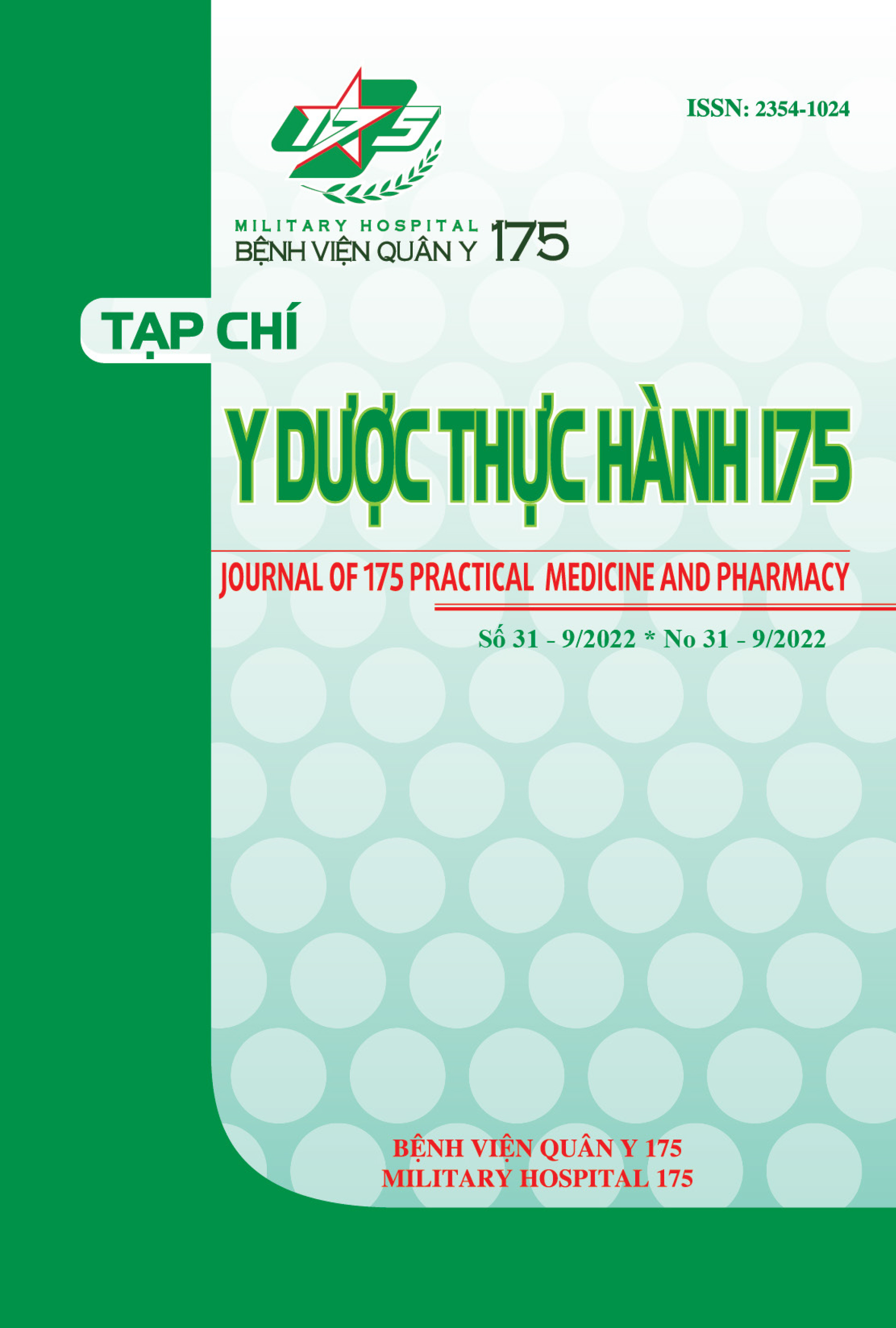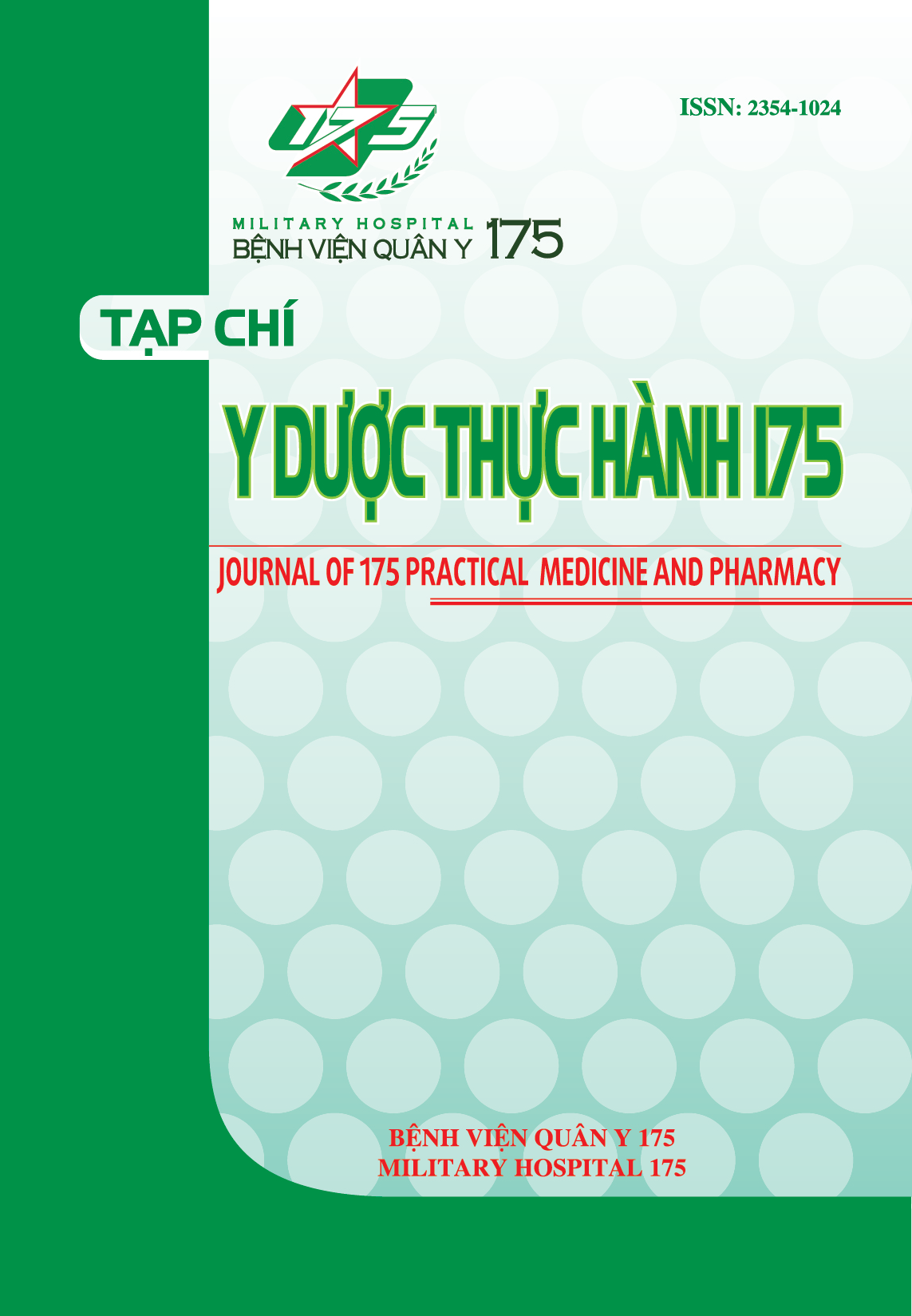MỘT SỐ ĐẶC ĐIỂM LÂM SÀNG, CẬN LÂM SÀNG, VI KHUẨN ĐỜM Ở BỆNH NHÂN VIÊM PHỔI BỆNH VIỆN ĐIỀU TRỊ TẠI BỆNH VIỆN PHẠM NGỌC THẠCH THÀNH PHỐ HỒ CHÍ MINH
Các tác giả
DOI: https://doi.org/10.59354/ydth175.2022.48Từ khóa:
Viêm phổi bệnh viện, viêm phổi liên quan thở máy, viêm phổi không liên quan thở máy, vi khuẩn đờmTài liệu tham khảo
Torres, A., et al., International ERS/ESICM/ESCMID/ALAT guidelines for the management of hospital-acquired pneumonia and ventilator-associated pneumonia: Guidelines for the management of hospital-acquired pneumonia (HAP)/ ventilator-associated pneumonia (VAP) of the European Respiratory Society (ERS), European Society of Intensive Care Medicine (ESICM), European Society of Clinical Microbiology and Infectious Diseases (ESCMID) and Asociación Latinoamericana del Tórax (ALAT). Eur Respir J, 2017. 50(3).
Tạ Thị Diệu Ngân., Nghiên cứu đặc điểm lâm sàng, cận lâm sàng và căn nguyên của viêm phổi mắc phải tại cộng đồng, in Truyền nhiễm và các bệnh Nhiệt đới. 2016, Đại học Y Hà Nội.
Mandell, L.A., et al., Infectious Diseases Society of America/American Thoracic Society consensus guidelines on the management of community-acquired pneumonia in adults. Clin Infect Dis, 2007. 44 Suppl 2(Suppl 2): p. S27-72.
Phạm Ngọc Kiếu, P.N.T., Trần Thị Tiểu Thơ, Nguyễn Trung Bình, Đặc điểm vi khuẩn gây viêm phổi bệnh viện tại Khoa Hồi sức tích cực và chống độc Bệnh viện Đa khoa trung tâm An Giang Kỷ yếu Hội nghị Khoa học Bệnh viện An Giang – 2015, 2015.
Lê Tiến Dũng, Viêm phổi bệnh viện: Đặc điểm vi khuẩn và đề kháng kháng sinh in vitro tại Bệnh viện Đại học Y dược thành phố Hồ Chí Minh. Thời sự Y học, 2017.
Marini, S., et al., Men Experience Higher Risk of Pneumonia and Death After Intracerebral Hemorrhage. Neurocritical care, 2018. 28(1): p. 77-82.
Yoshimoto, A., et al., Severe Community-acquired Pneumonia in an Intensive Care Unit: Risk Factors for Mortality. Internal Medicine, 2005. 44(7): p. 710-716.
Park, S., Tachypnea. 2022: StatPearl.
Torres, A., et al., Incidence, risk, and prognosis factors of nosocomial pneumonia in mechanically ventilated patients. Am Rev Respir Dis, 1990. 142(3): p. 523-8.
Esperatti, M., et al., Nosocomial pneumonia in the intensive care unit acquired by mechanically ventilated versus nonventilated patients. Am J Respir Crit Care Med, 2010. 182(12): p. 1533-9.
Koulenti, D., E. Tsigou, and J. Rello, Nosocomial pneumonia in 27 ICUs in Europe: perspectives from the EU-VAP/ CAP study. Eur J Clin Microbiol Infect Dis, 2017. 36(11): p. 1999-2006
Jones, R.N., Microbial etiologies of hospital-acquired bacterial pneumonia and ventilator-associated bacterial pneumonia. Clin Infect Dis, 2010. 51 Suppl 1: p. S81-7.
Haeili, M., et al., Drug resistance patterns of bacteria isolated from patients with nosocomial pneumonia at Tehran hospitals during 2009-2011. J Infect Dev Ctries, 2013. 7(4): p. 312-7.
Medell, M., et al., Nosocomial ventilator-associated pneumonia in Cuban intensive care units: bacterial species and antibiotic resistance. MEDICC Rev, 2013. 15(2): p. 26-9.
Tải xuống
Tải xuống: 180










